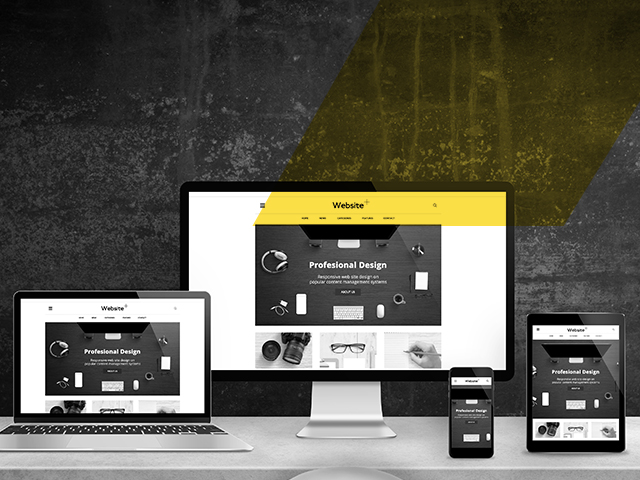In today’s digital era, web design plays a crucial role in creating engaging and user-friendly websites. The combination of a well-crafted user interface (UI) and a seamless user experience (UX) is the key to designing successful websites. If you’re wondering how to convert UI/UX into web design effectively, this comprehensive guide is here to help. We will delve into the principles, techniques, and best practices that will empower you to create visually appealing and highly functional websites. So, let’s dive in!
How to Convert UI/UX into Web Design?

Understanding UI/UX Design
Before we explore the process of converting UI/UX into web design, let’s first understand the concepts of UI and UX design.
User Interface (UI) Design
UI design focuses on creating visually appealing interfaces that facilitate user interaction. It involves the selection of colors, typography, icons, buttons, and other visual elements to enhance the overall aesthetics of a website. A well-designed UI enhances the user’s perception of a website, making it visually engaging and intuitive.
User Experience (UX) Design
UX design, on the other hand, focuses on enhancing the overall experience of users while they interact with a website or application. It involves understanding user behavior, conducting research, creating wireframes and prototypes, and optimizing the design to ensure seamless navigation, easy accessibility, and user satisfaction.
The Conversion Process: Step by Step
Now that we have a basic understanding of UI/UX design, let’s explore the step-by-step process of converting UI/UX into web design.
Step 1: Research and Analysis
To begin, conduct thorough research to understand the target audience, their preferences, and the purpose of the website. Analyze existing websites in the same niche to identify design trends, strengths, and weaknesses. This research will provide valuable insights and serve as a foundation for the design process.
Step 2: Define the User Flow
User flow refers to the path users take when interacting with a website. It is essential to define a clear and intuitive user flow to ensure seamless navigation. Start by creating wireframes or flowcharts that outline the structure and organization of the website. This step will help you identify the key pages, their hierarchy, and the desired user actions.
Step 3: Sketch and Wireframe
Once the user flow is defined, start sketching ideas for the website design. Sketching allows you to explore different layout options and visualize the placement of key elements. After sketching, create wireframes using design tools like Sketch, Figma, or Adobe XD. Wireframes serve as a blueprint for the final design and help in communicating ideas to stakeholders.
Step 4: Visual Design
With wireframes in place, it’s time to bring your design to life with visual elements. Start by selecting an appropriate color scheme that aligns with the brand identity and evokes the desired emotions. Choose typography that is legible and complements the overall design. Incorporate icons, images, and other visual elements strategically to enhance the user experience.
Step 5: Prototyping and Testing
Prototyping is a crucial step in the design process as it allows you to test the usability and functionality of the website before development. Use prototyping tools like InVision or Marvel to create interactive prototypes. Conduct user testing sessions to gather feedback and make necessary improvements. Iteratively refine your design based on the feedback received.
Step 6: Collaboration with Developers
Collaboration between designers and developers is essential to ensure the successful implementation of the design. Work closely with developers to translate the design into a functional website. Provide detailed design specifications and communicate effectively to address any challenges that may arise during development.
How important is UI/UX in web design?
UI/UX is paramount in web design as it directly influences user engagement and satisfaction. A well-designed UI/UX enhances the overall user experience, leading to increased conversion rates and customer retention.
Can UI/UX design improve website performance?
Yes, UI/UX design can significantly impact website performance. By optimizing the user interface and enhancing the user experience, you can reduce bounce rates, improve page load times, and increase overall website performance.
What role does color play in UI/UX design?
Colors play a vital role in UI/UX design as they evoke emotions and influence user behavior. Selecting the right color scheme can help create a visually appealing interface, convey brand personality, and guide users’ attention to key elements.
How can I ensure my design is user-friendly?
To create a user-friendly design, focus on simplicity, intuitive navigation, and clear communication. Conduct usability tests, gather feedback from users, and iteratively refine your design to ensure it meets user expectations.
Is responsive design necessary for UI/UX?
Yes, responsive design is essential for UI/UX. With the increasing use of mobile devices, it is crucial to design websites that adapt seamlessly to different screen sizes and resolutions. Responsive design ensures optimal user experience across all devices.
How can I keep up with the latest UI/UX trends?
Staying updated with the latest UI/UX trends is essential to deliver modern and relevant designs. Join design communities, follow industry-leading blogs, attend conferences and webinars, and engage in continuous learning to stay ahead of the curve.
Hire a Web Developer to Convert UI/UX into Responsive Web Design
Are you looking to transform your UI/UX design into a responsive and user-friendly website? Hiring a skilled web developer in Dubai can make all the difference. In this article, we’ll explore the benefits of hiring a web developer, the qualities to look for, and how they can help you achieve your goal of converting UI/UX into responsive web design. Let’s dive in!
Why Hire a Web Developer?
Expertise and Experience
Web developers are trained professionals with expertise in coding, programming languages, and web development frameworks. They have the knowledge and experience to bring your UI/UX design to life, ensuring that it functions seamlessly and delivers an exceptional user experience.
Technical Skills
Web developers possess a wide range of technical skills required to convert UI/UX into responsive web design. They are proficient in HTML, CSS, JavaScript, and other programming languages, enabling them to create interactive and dynamic web pages that adapt to different devices and screen sizes.
Custom Solutions
Hiring a web developer allows you to get a customized solution tailored to your specific requirements. They can analyze your UI/UX design, understand your business goals, and develop a website that aligns with your brand identity and delivers a unique user experience.
Time and Cost Efficiency
While it may seem tempting to tackle web development yourself, it can be time-consuming and costly in the long run. A professional web developer can streamline the development process, saving you time and effort. They also have the necessary tools and resources to optimize the website’s performance and ensure efficient code implementation.
Conclusion
Converting UI/UX into web design is a multifaceted process that requires careful planning, research, and collaboration. By following the step-by-step process outlined in this guide, you can create visually stunning and user-centric websites that leave a lasting impression on your audience. Remember to prioritize user experience, conduct thorough testing, and iterate on your designs to achieve the best results. Embrace the power of UI/UX design and unlock the potential to create impactful web experiences.
